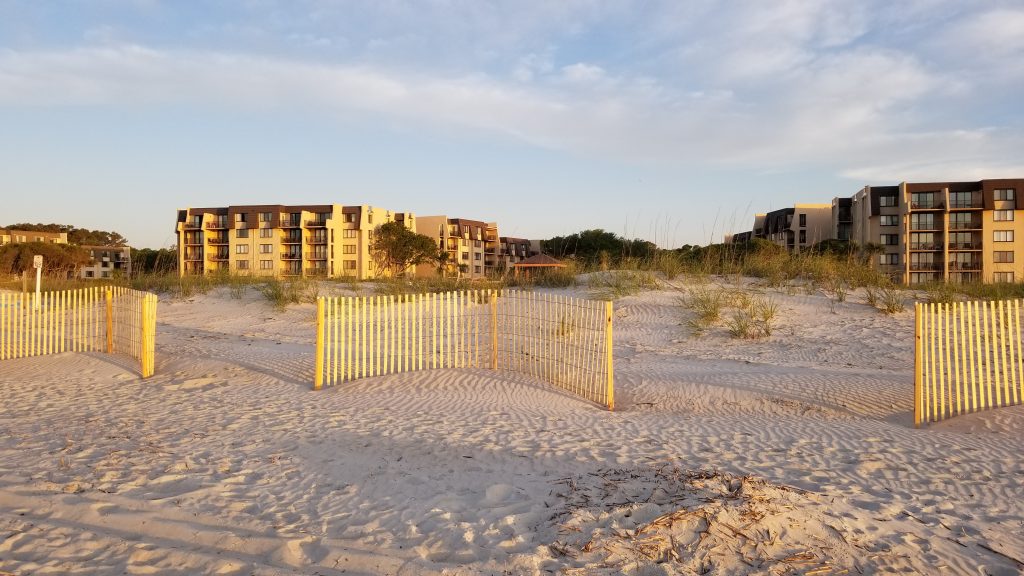Beach Dunes
Sand dunes are common features of shoreline and desert environments. Dunes provide habitat for highly specialized plants and animals, including rare and endangered species. They can protect beaches from erosion and recruit sand to eroded beaches. Dunes are threatened by human activity, both intentional and unintentional. Countries such as the United States, Australia, Canada, New Zealand, the United Kingdom, and Netherlands, operate significant dune protection programs.
Stabilizing dunes involves multiple actions. Planting vegetation reduces the impact of wind and water. Wooden sand fences can help retain sand and other material needed for a healthy sand dune ecosystem. Footpaths protect dunes from damage from foot traffic. They can also protect beaches from erosion and recruit sand to eroded beaches and to many other places too. – Wikipedia
The Town of Hilton Head Island has installed new “dune fences” to help rebuild the dunes after the damage during Hurricanes Matthew (Oct. 2016) and Irma (Sept. 2017).
The Town of Hilton Head Island has asked that we educate our owners and guests on two very simple rules regarding the new dune fencing. Thank you for your cooperation!
DO NOT WALK NEAR THE DUNE FENCING!
DO NOT HANG ITEMS ON THE DUNE FENCING!
The Beaufort County Sheriff’s Department patrols the beach and enforces all beach regulations. This includes “removal, alteration, or damage to dunes, sea oats, or other dune flora”.
The new fencing is growing a sand dune around it. Therefore, walking close to or around the fencing is trampling the growing dune and slowing the process. Hanging items on the fencing damages the fencing, as well as tramples the growing dune when approaching the fence.
Some Frequently Asked Questions:
How does it work? The fence is designed to act like spartina grass. It catches sand blowing along the beach, causing it to fall and settle at the base of the fence. The size and shape of the slats with the amount of spacing allows for a uniform dune to start to form. Over time, the sand will mound higher and higher. The Town of Hilton Head Island has a contractor that will come out and plant dune flora in the growing dune. The flora’s roots help strengthen the dune and will continue to process of catching sand once the fence has been covered. For a more in depth understanding, check out this Fact Sheet put together by the Massachusetts Office of Coastal Zone Management where they go in detail about how these fences work.
So the fencing isn’t permanent? No. The sand will eventually cover the fencing and it will decompose over time. This is also why the wood isn’t painted or treated. It would be counter productive to try to remove the fencing.
What about the sea turtles? This fencing is “sea turtle friendly”. There was a study that confirmed that when confronted with a barrier, the same percentage of turtles still made it to the dunes to nest (75%).

